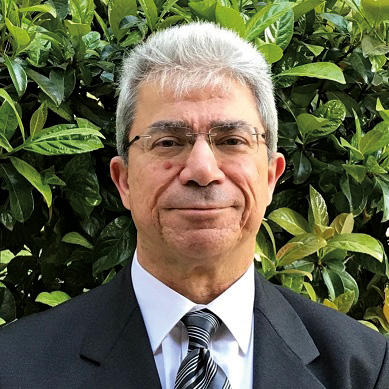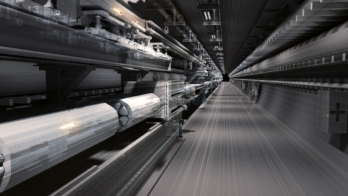With accelerator and detector R&D for a future e+e– collider advancing quickly and physics studies being consolidated, what remains, says Paris Sphicas, is for the community to converge on the next machine in the context of the next European strategy update.

The 2020 European strategy for particle physics justifiably singled out the Higgs boson as the most mysterious element of the Standard Model. Uncovering the particle’s true nature and answering the numerous questions raised by its interactions with other particles is set forth as the highest priority of the field. And this, the strategy concluded, requires the next dream machines: an e+e– Higgs factory and, in the longer term, a 100 TeV hadron collider. Getting there will be no easy feat, and thus several intermediate steps, necessary for bringing this programme to fruition, have been set in motion.
Firstly, the European Committee for Future Accelerators (ECFA) was called upon by the CERN Council to formulate a global detector R&D roadmap for both short- and long-term experimental endeavours. A painstaking consultation process across the entire range of detector technologies – from gas, liquid and solid-state detectors to particle-
identification systems, calorimetry and blue-sky R&D – culminated in a 250-page document and the creation of detector R&D collaborations to focus on the most relevant topics. In parallel, the European Laboratory Directors Group has compiled an accelerator R&D roadmap spanning activities such as high-field magnets, high-gradient accelerating elements, plasma-wakefield acceleration, energy- recovery linacs, and more.

With the accelerator and detector development in the best of hands, what remains is to converge on the next machine: namely the e+e– collider that takes us as close as we can to a full understanding of the Higgs boson and the electroweak and top-quark sectors. Thankfully, we already know a lot about the reach of such “HET” factories from previous studies, in particular those carried out during the previous strategy update. To encourage further work en route to the next strategy update, ECFA has put together a HET-factory study group that brings together both the linear and circular e+e– detector communities. The goal is to solidify our understanding of the requirements that the physics places on the experiments and on the associated beams. A common software framework with more realistic detector simulation and a parallel study of detector structures are the other working areas in the study group. Good progress is visible, and the third and last major workshop on the HET-factory study will take place in October 2024.
Major players
The other major players in the global high-energy physics scene completed their corresponding strategy processes either several years ago (Japan with the ILC and China with the CEPC) or recently (US with the P5 process). All eyes are now turned to Europe as we enter the final stretch towards the next update of the European strategy. With the Future Circular Collider feasibility study due to be completed next year, all the elements needed for a fully informed decision on the future of European – and global – particle physics will soon be in place.
The entire field, and especially the younger generations, are most eagerly awaiting this decision
The next strategy process will build on the excellent work that took place in the context of the previous one, which culminated with a large community gathering in Granada. Taking into account the updated information, it is both expected and highly desirable that the process converges quickly, with a definitive recommendation on both the next e+e– collider and the longer-term prospects. The entire field, and especially the younger generations, are most eagerly awaiting this decision. Today, in parallel with maximally exploiting the physics potential of the LHC, our most important duty is to ensure that current PhD candidates find themselves at the centre of future discoveries a few decades from now.
Is all this possible for Europe? Absolutely! CERN has an unparalleled track record on the world stage with the ISR, SppS and LEP legacies, as well as the tremendous success of the LHC. These have not only provided some of the greatest advances in our understanding of the fundamental elements of nature, but also serve as guarantors of CERN’s ability to continue advancing the energy frontier, keeping Europe at the leading edge of scientific knowledge. All that is currently needed is the final direction – and the start signal. Quo vadis European particle physics? Towards the next discovery frontier, to further unravel the mysteries of the fascinating universe we have come to inhabit.





